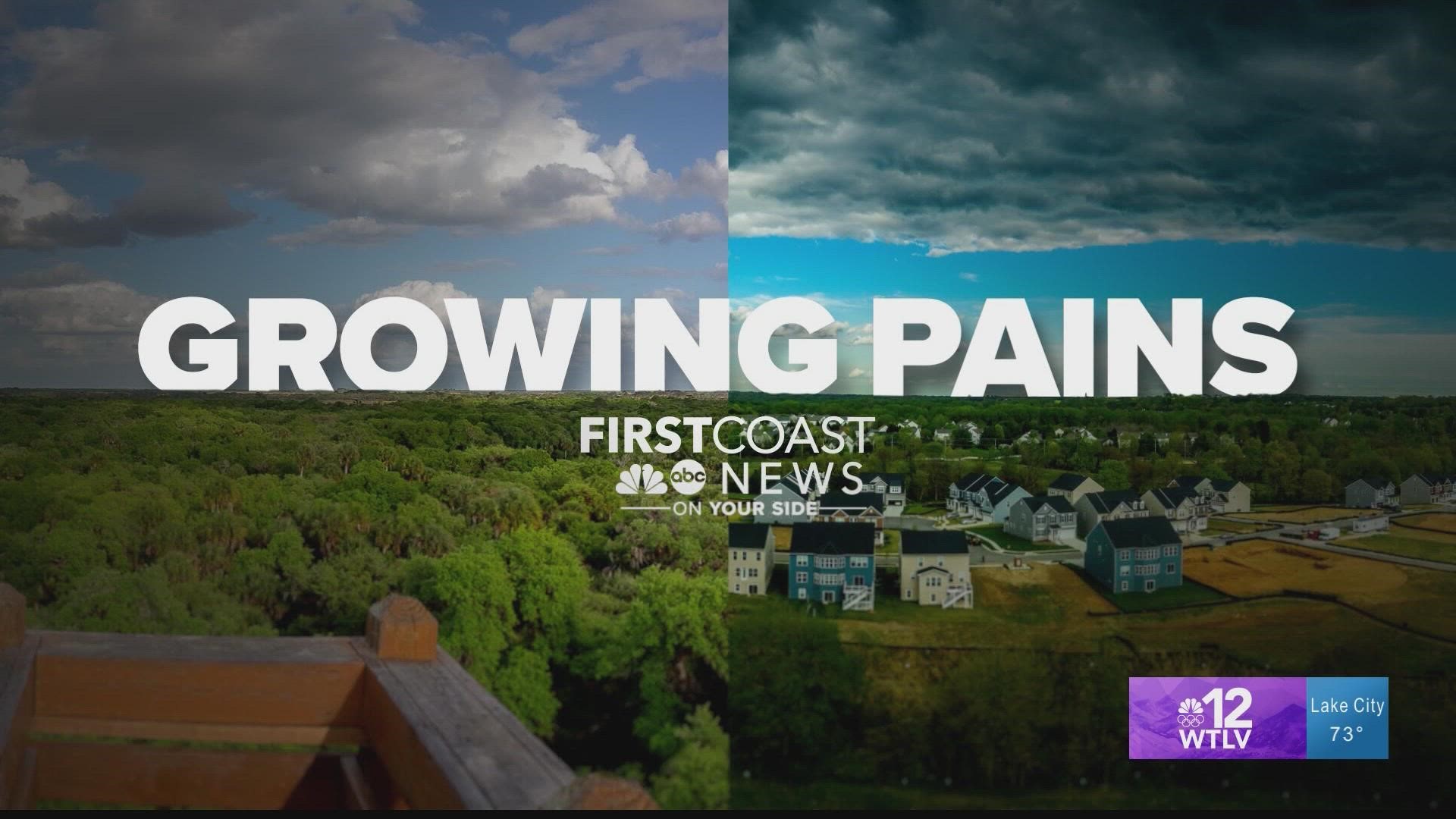ST. JOHNS COUNTY, Fla. — You’ve probably heard the quip: "If you believe that, I have some swampland I’d like to sell you.”
In Florida, swamp land, often referred to as wetlands, can be legally built on with conditions.
In St. Johns County, the population and land development is exploding, and swampland is getting developed.
"I’ve lived in the county since 1985," Sue Bergeron said. "I’ve seen a lot of changes."
Bergeron lives in St. Johns County on Winton Circle. It's a one-road neighborhood built in the 1990’s with poor drainage. So her street has seen severe flooding for years.
The county is working to ease the flooding there by installing larger pipes, creating ditches and elevating the road.
However, less than a half mile down the street on Watson Road, a piece of land has received the go-ahead to be clear-cut. The county said it will be developed into either two restaurants or a restaurant and a retail store.
These few acres on the corner of Watson and U.S. 1 used to be swampland before it was cleared and elevated. St. Johns County told First Coast News it was 70 percent wetlands.
Bergeron is concerned that "they are building and paving over a swamp that was already draining onto us. So unless it had the best possible plans, it’s going to put more water on us."
According to St. Johns County, the water will run off of that corner property to the east. However, Bergeron and some of her neighbors who live down Watson Road, wonder what if it doesn’t. What if the water goes westward, toward their homes? In this situation, there’s not a lot a homeowner can do legally.
"It’s really hard to prove their water landing on a piece of water is moving over to your property," said Policy and Planning Director of 1000 Friends of Florida Jane West. It's a not-for-profit smart growth advocacy organization.
In Florida, it is legal to build on wetlands but a developer has to provide a way for the water to stay on the property, such as a retention pond or proper drainage. The developer also has to get an environmental permit from the governing water management district.
However, West noted that the state slashed the budget years ago for water management districts.
"We need those water management districts to have the resources to fairly evaluate all of the engineering plans coming their way," West said.
Yhere are more plans being submitted as this state's population grows.
The project at the corner of U.S. 1 and Watson may not be major development, but it wrings out the question: Is it right to build on swamp land?
"Whether it’s right or wrong," West said, "is for others to judge. But it’s very short sighted and not smart."
Bergeron said, "A swamp’s natural function is to help filter and take water away as are all the trees we take down."

